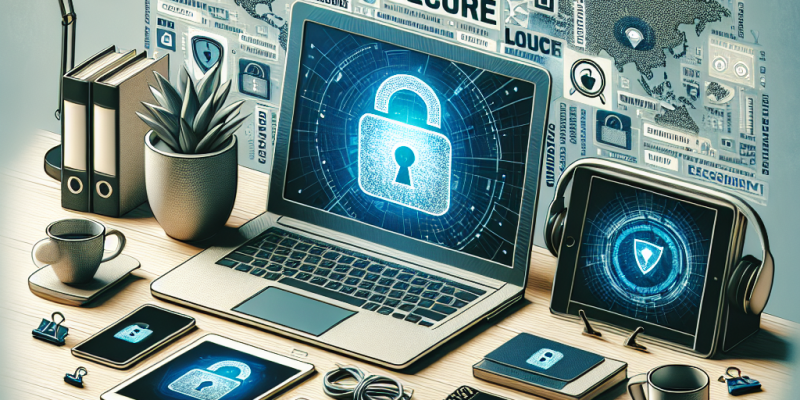Staying Secure: Essential Tips for Remote Work

As remote work becomes a staple for many organizations, ensuring cybersecurity has never been more critical. With the rise of digital threats, it’s essential to implement robust security measures. Here are essential tips to help safeguard your remote working environment.
1. Use Strong Passwords and Multi-Factor Authentication
Creating unique, complex passwords for your various accounts is the first line of defense against cybercriminals. Incorporate upper and lower case letters, numbers, and symbols. Additionally, enable multi-factor authentication (MFA) whenever possible. MFA adds an extra layer of security by requiring a second form of verification, making unauthorized access significantly harder.
2. Secure Your Home Network
Your home Wi-Fi is often less secure than corporate networks. To fortify it:
- Change the default username and password for your router.
- Enable WPA3 encryption if available, or at least WPA2.
- Regularly update your router’s firmware.
- Consider creating a separate guest network for visitors or IoT devices to minimize vulnerabilities.
3. Utilize a Virtual Private Network (VPN)
A VPN encrypts your internet connection, making it difficult for hackers to intercept data. When using public Wi-Fi, always connect through a VPN to reduce the risk of exposure. Many companies provide VPN services, so make sure to utilize yours when accessing sensitive information.
4. Implement Secure File Sharing Tools
When sharing files, avoid using personal email accounts or unsecured platforms. Opt for secure, company-approved file-sharing solutions that provide encryption and access controls. This ensures that only authorized personnel can access sensitive information.
5. Keep Software Updated
Outdated software can harbor vulnerabilities that hackers can exploit. Regularly check for and install updates for your operating system, applications, and antivirus software. Enable automatic updates when possible to stay protected without having to remember.
6. Be Aware of Phishing Attacks
Phishing schemes have become increasingly sophisticated. Always verify the authenticity of emails, especially those requesting sensitive information or prompting you to click on links. Look for tell-tale signs such as mismatched URLs or unusual language in the email.
7. Implement Endpoint Security
Ensure that all devices used for work are secured and monitored. This includes:
- Installing antivirus software and configuring it for real-time scanning.
- Using mobile device management (MDM) solutions to oversee company devices.
- Regularly backing up data to secure locations to minimize loss in case of an incident.
8. Create a Security Policy
Organizations must establish clear security guidelines for remote workers. This policy should outline:
- Approved tools and technologies for remote work.
- Procedures for reporting security incidents.
- Guidelines for personal device use, ensuring any personal devices meet established security standards.
9. Educate Your Team
Regular training and awareness programs can empower your team to recognize and respond to potential security threats. As new threats emerge, ensure that all employees remain informed about the latest cybersecurity trends and best practices.
10. Practice Regular Security Audits
Conduct periodic audits of your security measures to identify potential vulnerabilities. This can include reviewing access controls, examining logs for unusual activity, and ensuring compliance with company policies. Regular assessments help maintain a resilient security posture.
Conclusion
In a world where remote work is increasingly common, prioritizing cybersecurity is essential for protecting both personal and company data. By implementing these essential tips and fostering a culture of security awareness, organizations can minimize risks and create a safer remote working environment. Staying secure is not just about having the right tools; it’s about cultivating responsible practices that protect everyone involved.














